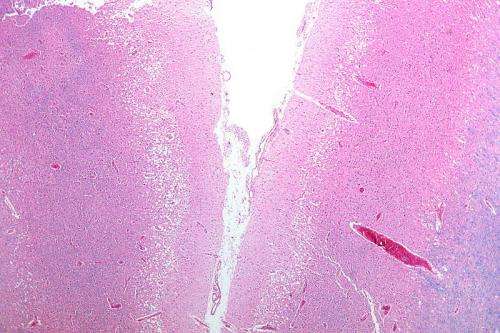
A phase II, randomized clinical trial found that the optimal period for intensive rehabilitation of arm and hand use after a stroke should begin 60 to 90 days after the event. The study, conducted by Georgetown University and MedStar National Rehabilitation Network (NRH) researchers, published September 20, 2021, in PNAS
The same intensive rehabilitation at less than 30 days after a stroke provided some benefit, but rehabilitation at six months or more after a stroke showed no significant benefit compared to those receiving standard care.
Approximately 750,000 new strokes occur each year in the United States. Nearly two-thirds of people who have a stroke do not recover complete function in their hands and arms, an impairment that can severely limit everyday activities.
“Our finding demonstrates the existence of a critical period or optimal time when adults are most responsive to rehabilitation after a stroke,” says lead author Alexander Dromerick, MD, professor of Rehabilitation Medicine and Neurology and chair of Rehabilitation Medicine at Georgetown University Medical Center and vice president for research at MedStar NRH. “Previous clinical trials have found few or very small improvements in motor function post-stroke, so our research could be an important breakthrough in finding ways we can make substantial improvements in arm and hand recovery.”
For their trial, the clinicians enrolled 72 stroke participants, primarily from the Washington, D.C. area, within three weeks after their stroke. The participants were randomly assigned to receive 20 extra hours of activity-focused motor skills therapy, starting at different times after stroke, in addition to their regularly prescribed therapies. The additional therapy began either at 30 days after their stroke, at 60 to 90 days post-stroke, or at six months or more post-stroke. The results were compared to a control group that received only their prescribed rehabilitation therapies but no extra motor rehabilitation training.
“Our results suggest that more intensive motor rehabilitation should be provided to stroke patients at 60 to 90 days after stroke onset,” said Elissa Newport, Ph.D., director of the Center for Brain Plasticity and Recovery at Georgetown University Medical Center and corresponding author of this article. “It is well known that a young developing brain shows great plasticity, compared to other times in life. Our results show that there may be a similar period of heightened plasticity for stroke patients at a specific time after their stroke.”
The improvement in hand and arm function found in this study was not only statistically significant, it was large enough to be perceived as functionally meaningful by the patients themselves.
“Our approach shows that patients can tolerate much more intensive motor training than is traditionally provided if they are free to choose the activities used in their training,” said Dorothy F. Edwards, Ph.D., professor of Kinesiology and Medicine at the University of Wisconsin-Madison and member of the Center for Brain Plasticity and Recovery. “Knowing there might be a critical period for recovery, there are many techniques one might imagine bringing to bear on understanding and enhancing recovery during this time period.”
The researchers hope that this study will establish a time window in which future research can combine therapy with brain stimulation or medications aimed at helping remaining healthy areas of the brain recover impaired functions or take over functions lost from the damage inflicted by a stroke. The investigators also plan to design a larger clinical trial to confirm the current findings and to determine the optimum dose of therapy, thereby achieving the best effects during this time-sensitive window.







